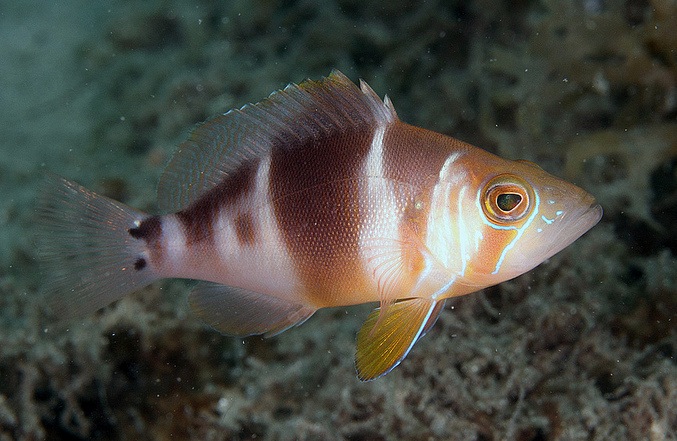
Hypoplectrus floridae and Hypoplectrus ecosur are two new species of hamlets recognized by unique coloration and confirmed with genetic analysis. The hamlets are a very interesting, curious and colorful group of medium sized basslets with behaviors that are reminiscent of both hawkfish, anthias and small groupers. The species of hamlets are distinguished primarily by coloration which can range from barred to blue to golden, yellow and all black. Both Hypoplectrus floridae and H. ecosur are closely related to the widespread Caribbean barred hamlet species, Hypoplectrus puella but they also have fairly distinct coloration, especially the spotted species from Mexico.

Hypoplectrus floridae is found in Florida and the Eastern Gulf of Mexico and it is “characterized by a pair of symmetrical dark spots at the base of the caudal fin along with a break in the mid-body narrow bar”. Most casual reef observers might mistake the new Florida hamlet for the more well known barred hamlet but the back twinspot marking on the tail should give away Hypoplectrus floridae.
Hypoplectrus ecosur has a much more distinct coloration that includes numerous small black spots towards the end of the body as well as a band under the eye which is distinctly orange in coloration. The Ecosur hamlet is known only from Isla Contoy in the northern tip of the Yucatan Peninsula of Mexico, but not ranging south towards the meso-American barrier reef of the eastern Yucatan and Belize.
Many pictures exist of the Florida hamlet, many specimens have also been kept in aquarium but very few pictures of Hypoplectrus ecosur exist, and the video below from 2004 is about the only visual of this interesting new hamlet. Both new species of hamlets are described by B.C. Victor in the fifth volume of the Journal of Ocean Science Foundation.



